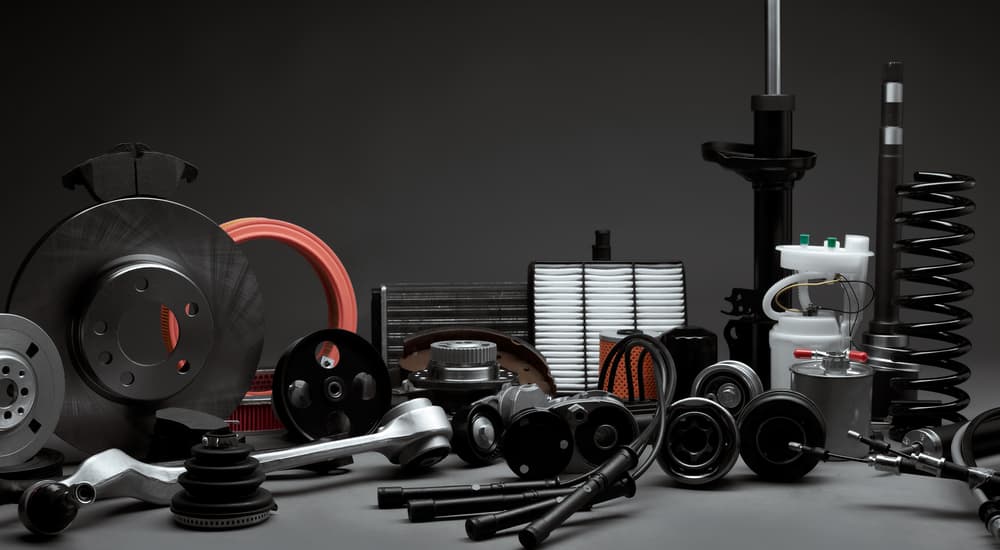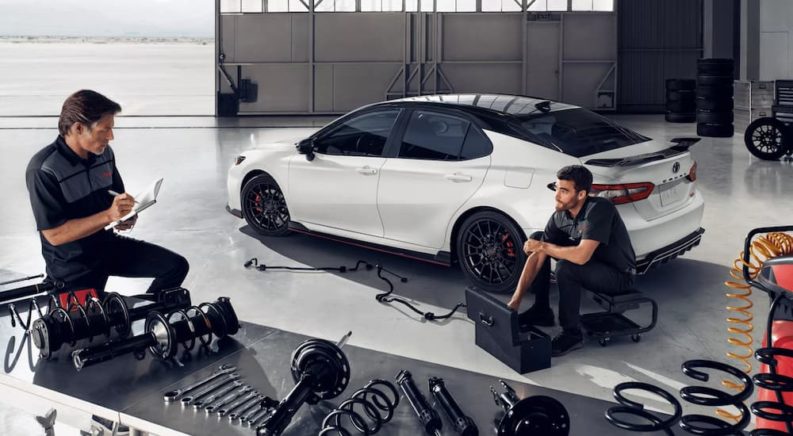Whether you need a Toyota collision center to upgrade your Corolla’s paint or for extensive repairs after your 4Runner was involved in a collision, you’ll quickly discover that not all collision centers are the same. One of the most significant factors differentiating these centers is the types of parts used to make the necessary repairs. For example, a dealership collision center typically relies on genuine OEM parts, whereas an independent repair shop usually uses aftermarket parts.
So, what’s the difference between OEM and aftermarket parts? How do they impact your vehicle and your warranty coverage? Does saving money by using an aftermarket part always mean sacrificing quality? Here’s everything you need to know about the critical differences between OEM and aftermarket parts so that you can make an informed decision to keep your Toyota running its best for many miles down the road.
What Are OEM Parts?
OEM stands for “Original Equipment Manufacturer” and are parts designed by the manufacturer for a specific model. For example, you damaged the bumper on your Toyota 4Runner during your last trail ride and are relying on a Toyota collision center to oversee the repair. A dealership collision center will use an OEM bumper manufactured by Toyota for the 4Runner that’s precisely like the original.
Genuine OEM parts extend beyond bumpers and include everything from oil filters and electrical components to other body parts like windows, doors, and the chassis. The biggest thing to remember about these parts is that they are designed to do a specific job for a particular make and model. As a result, they are not a one-size-fits-all part but specific to your vehicle and can help maintain the integrity of your car, keeping your Toyota a Toyota every mile down the road.
What Are Aftermarket Parts?
While OEM parts are automaker-specific, aftermarket parts are not. Instead, these are parts that various manufacturers make to give drivers more options when it’s time for collision repair or routine maintenance. So, for example, an aftermarket oil filter for your Toyota Tundra isn’t explicitly designed for the Tundra and might also work on another truck or SUV. This versatility makes aftermarket parts a staple in independent collision centers and body shops because they are readily available and less expensive than their OEM counterparts.

Weighing the Pros and Cons
Drivers needing collision repair often face a dilemma when it’s time to choose the right parts. While dealership collision centers use OEM parts, drivers always have the option to choose aftermarket parts to save money. However, other factors may be at play, like an insurance company that will only cover aftermarket parts on the repair. So, which parts are better––OEM or aftermarket? It depends on your needs and who you ask.
Parts Cost and Quality
OEM parts are the most expensive because they’re built by your vehicle’s manufacturer for a specific purpose. As a result, they are made with higher-quality materials that promise and deliver the same performance and reliability as the original components. There’s no question of an OEM part’s integrity because it’s the same part that came on your vehicle when it rolled off the production line and out of the factory.
Aftermarket parts aren’t made by the automaker for a particular vehicle. Instead, they’re built by several manufacturers tasked with meeting demands across the industry. As a result, these parts are far less expensive than OEM parts, but those savings can sometimes come at a higher cost as lower-quality parts can fail faster and lead to more frequent repairs.
Parts Performance
Aftermarket parts wouldn’t be readily available if they didn’t get the job done. However, there is a lot of debate about how they can impact your vehicle’s performance. For some, aftermarket parts can affect performance because they aren’t built with the same quality materials as the original components. For others, aftermarket parts can offer the same, if not better, performance because aftermarket manufacturers reverse engineer the original parts to build better-performing alternatives at more affordable prices.
This leads to many other questions about OEM parts and their performance. Generally, OEM parts are renowned for delivering the same quality and performance as the original parts. However, using the same logic above tests this reality. For example, using an OEM part to replace an original component that didn’t perform well may lead to the same issue, while an aftermarket part could resolve the problem because the aftermarket manufacturer reverse-engineered the design to improve its functionality.
Parts Coverage
One of the greatest advantages of investing in an OEM part is knowing it’s backed by a warranty. Most manufacturers back their OEM parts with a one-year warranty, with many dealership collision centers also backing their labor. This coverage gives you peace of mind on the road and reflects the manufacturer’s confidence in its parts.
You won’t find many aftermarket parts that come with warranty coverage. Aftermarket manufacturers do everything possible to keep costs down and pass those savings down to drivers, so they sometimes use lesser-quality materials and skip the warranty altogether. This keeps costs down, but you have to weigh those initial savings against the value of having confidence when you’re behind the wheel.

Parts Selection
Your Toyota collision center relies on OEM parts, most of which are stocked in the dealership’s parts department. This inventory makes it easy to find OEM parts for your car, truck, or SUV because you can rely on the expertise of Toyota’s certified technicians. When you’re looking to do the repairs yourself, all it takes is walking into the parts department and asking for the OEM parts for your make and model.
Aftermarket manufacturers are plentiful, which means there’s an abundance of aftermarket parts at your disposal. In fact, the selection can be overwhelming if you aren’t familiar with the most reputable brands. While this can be stressful for some, the overabundance of parts is an advantage for others who like the convenience of having so many components available at more locations beyond the dealership.
Vehicle Warranty
When you need Toyota collision repair, you’ll need to know if your vehicle is still under warranty. This is essential because your warranty can help you reduce your out-of-pocket repair expenses, but it’s also crucial for another reason. Your vehicle’s warranty may specify the types of parts that must be used. For example, many manufacturer warranties require OEM parts, which means using an aftermarket part can void the coverage.
Choosing the Best Parts for Your Needs
The debate over which parts are better––OEM or aftermarket––continues and shows no signs of ever being resolved. However, choosing the best parts for your vehicle comes down to your Toyota and your needs. For example, your warranty coverage may require OEM parts for your Toyota Tundra, while another Toyota driver is working with an insurance company that will only cover less expensive aftermarket options. Is one necessarily better than the other?
As you’ve seen, there are advantages and disadvantages to both. OEM parts cost more because they’re made by the automotive manufacturer, but their high quality isn’t always guaranteed. Sometimes, aftermarket parts prove that saving a few dollars doesn’t come at the cost of quality since aftermarket manufacturers often reverse engineer the parts to make them better. But, of course, this doesn’t make the decision any easier.
As you weigh the pros and cons of these parts, also consider who you trust with your vehicle. A reputable Toyota collision center can help you make an informed decision, explaining your options and the needed repairs before any work is done. In addition, they can explain the difference between the OEM and aftermarket parts you need, giving you full access to their expertise so that you have confidence in their skills and your decision.

